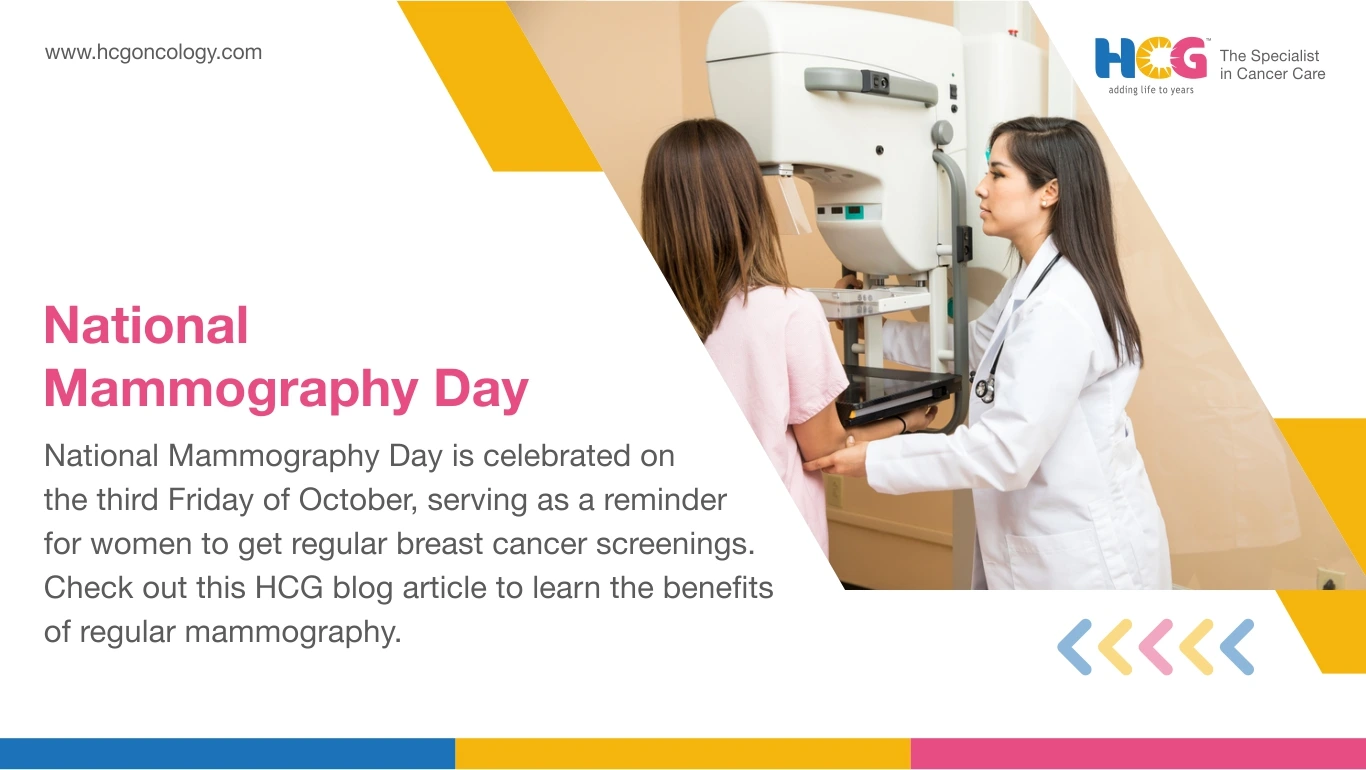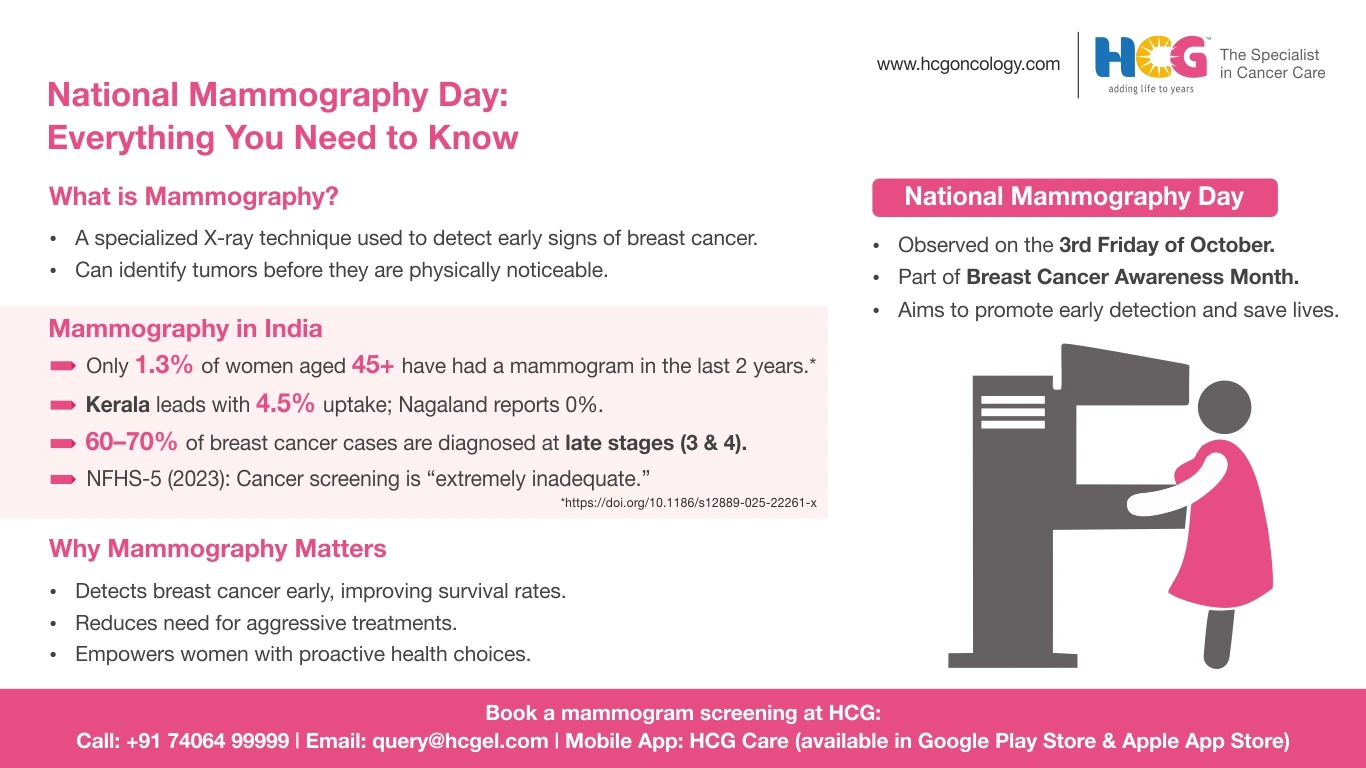
14 Nov, 2025
Feel free to reach out to us.

14 Nov, 2025

This article is medically reviewed by Dr. Sumit Sharma, Consultant – Interventional Radiology, HCG Cancer Centre, Kolkata.

Mammography, or a mammogram, is an imaging technique used to examine the breast tissue using X-rays. It assists the oncologists in looking for anomalies that indicate breast cancer and other non-cancerous breast conditions.
It is used as a breast cancer screening tool in apparently healthy women and as a diagnostic tool among those with pain or lumps in the breast.
During the procedure, the woman places her breast on a support plate. A paddle compresses the breast. The image of the breast tissue is captured using X-rays. Mammograms are capable of differentiating fatty tissue from tumors.
The technician generally takes two or more images of each breast to detect microcalcifications or tumors. It is a safe and effective method to detect breast-related diseases.
A mammogram is important for the following reasons:
Mammography plays a critical role in the effective management of breast cancer through early and accurate diagnosis.
Additional Reading: Mammogram Procedure: What is a Mammogram, Its Purpose & Its Types
National Mammography Day is celebrated on the third Friday of October every year and is observed as part of Breast Cancer Awareness Month.
In 1994, President Bill Clinton issued a proclamation related to breast cancer screening and the importance of mammography.
The summary of the proclamation is “Breast cancer affects all women, even those without a family history. Early detection through mammography significantly lowers mortality risk. However, many women, particularly those over 50 years of age, do not undergo regular screenings. African American women have higher mortality rates because of late-stage diagnoses.
Mammography is the most effective method to identify early-stage cancer. It may sometimes detect the cancer before symptoms appear. The U.S. Congress designated October 19, 1994, as National Mammography Day. It encourages public awareness, access to screenings, and nationwide support for breast cancer prevention and early detection.”
National Mammography Day has been celebrated every year since the proclamation of President Clinton.
Some of the important applications of mammography in the detection of breast cancer are:
A woman is considered at average risk if she has no medical history of breast cancer, no strong family history, no genetic mutation such as BRCA1/2, and has not received chest radiation before age 30.
Women at high risk should start annual screening with both a mammogram and breast MRI, usually beginning at age 30. This includes women who:
Book your mammogram at HCG for expert breast cancer screening and early detection. Women may book an appointment through various channels:
Mammography is the technique used to detect breast abnormalities at early stages. It involves the use of X-rays. National Mammography Day is celebrated on the third Friday of every month. Mammography helps in detecting tumors or microcalcifications of the breast. Various medical societies have recommended mammography in women based on their risk of breast cancer.

Dr. Sumit Sharma
Consultant – Interventional Radiology
MD (Radiodiagnosis), Fellowship (Onco-Imaging & Intervention)
Dr. Sumit Sharma is an adept interventional radiologist practicing at HCG Cancer Centre, a leading cancer hospital in Kolkata. His core knowledge lies in the field of cancer imaging and interventions. His expertise lies in performing image-guided biopsies, guided drainages, PTBD, PCN, tumor ablations, etc. He also specializes in performing certain cancer therapeutic procedures and administering palliative care to cancer patients. Dr. Sumit has a special interest in thoracic imaging, especially ILD.
Appointment Link: Book an Appointment with Dr. Sumit Sharma.